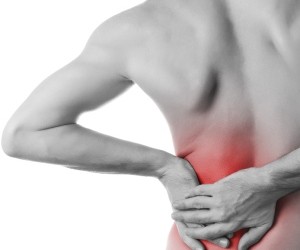By Kas Roussy
Low back pain is one of the most common health problems in the world, with at least 80 per cent of people experiencing at least one episode in their lives, says an Australian report.
About 90 to 95 per cent of adults have “non-specific back pain,” it says. That’s medical code for a pain whose cause cannot be pinpointed.The key to preventing lower back pain is not expensive shoe insoles and back straps, but exercise, says Chris Maher, a health researcher and professor with the George Institute for Global Health at the University of Sydney.
In a recently published scientific review in JAMA Internal Medicine, Maher and his colleagues analyzed data from more than 20 studies with about 30,000 participants from around the world with a history of back pain.
Researchers then looked at the best approach to prevent back pain, including education combined with exercise, exercise alone, and the use of orthotics and back braces.
What they found was surprising, says Maher. The only preventive measure supported by evidence is exercise programs.
Maher says the review found that lots of other things that people try, including “orthotics in shoes, back braces, redesigned workplace,” weren’t shown to be effective.
Many people believe in good faith that using a back brace is a good way to prevent back pain, Maher told CBC News. But it’s not particularly useful, and the same goes for those insoles in your shoes. Maher calls using braces and insoles “a misguided approach.”
Dr. Raja Rampersaud, an orthopedic surgeon at Toronto Western Hospital, told CBC News, “One of the challenges is, we’re always looking for quick fixes. For the majority of individuals, I’d say 80 to 90 per cent of people, there’s no quick fix.”
He agrees that exercise is the best medicine for back pain.
“If you see 10 people,” he says, “we’ll get 12 opinions as what is wrong with your back and what you should do.” But the one thing that is consistent, “actually comes down to exercise,” he says.At Pilates Process in Toronto, owner and fitness instructor Laura Helsel says about half her clients have come because of back pain, and half of those have lower back pain.
“There are certain quick fixes that people are naturally drawn towards. It’s not surprising that those products are
overprescribed, and perhaps overused,” she says.
“Movement is good. We are meant to move. Every study has pointed to that for a very long time.”
Exercise provides a bonus, Maher and his team found. “The interesting thing is the effect of exercise was quite large. In one of the trials, it halved the risk of lower back pain in the next year.”
But Maher noticed recurrences after 12 months if participants stopped exercising.
Aging population
Lower back pain is not only a painful condition, it generates enormous costs in treatments and time lost from work, the review says. In an aging population such as Canada’s, the number of people affected is likely to increase.
With a high recurrence rate of lower back pain, the study states, “It’s important to know whether it is possible to prevent LBP and, if so, which interventions are most effective.”
But getting research funding into back pain has been, well, a pain in the neck for Maher and his colleagues.
He says there’s a reluctance to spend money on pain research. “When you speak to people who fund medical research, they seem to think of back pain as a trivial issue.”
A commentary attached to the JAMA report says there is concrete evidence on the value of exercise to prevent lower back pain, but “formal exercise instruction after an episode of LBP is uncommonly prescribed by physicians.”














